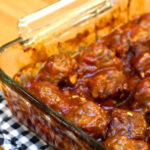Pioneer Maize Seeds are once again capturing the attention of farmers, signaling a robust comeback in the agricultural sector. Recent field observations and farmer testimonials suggest significant advancements in Pioneer’s seed performance, effectively addressing past concerns and reigniting interest in the brand.
Addressing Standability and Yield Performance
Concerns regarding standability in Pioneer maize varieties, which surfaced in previous years, appear to be largely mitigated. Direct comparisons with competitors, including Dekalb, indicate that Pioneer hybrids now exhibit comparable, and in some instances, superior standability. While Pioneer may have experienced a slight decrease from its historical yield advantage, a phenomenon potentially linked to broader genetic advancements and sharing across the industry, the latest genetic developments are demonstrably closing this gap and presenting promising yield potentials.
Promising New Pioneer Maize Hybrids on the Horizon
A wave of new Pioneer maize hybrids is generating considerable excitement among growers. Varieties such as 34F97, 33T55, and 33F88 are particularly noteworthy, garnering positive feedback and field trial success. Among these, the 33T55 hybrid has stood out as exceptionally impressive in real-world conditions, indicating a strong likelihood of delivering substantial yields in upcoming seasons.
Pioneer’s Strategic Focus on Drought Tolerance
Pioneer’s commitment to enhancing drought tolerance in its maize seeds is a crucial differentiator, especially in increasingly unpredictable climates. Their extensive drought testing facility located in Woodland, California, plays a pivotal role in this effort. This facility allows for rigorous evaluation of maize hybrids under severe drought conditions through drip tape irrigation systems, mimicking extreme water stress environments. Hybrids that achieve a drought tolerance rating of “8” in these tests are particularly valuable, offering farmers a reliable option for consistent yields even when facing significant moisture deficits. This is becoming increasingly relevant as many regions anticipate drought conditions, making these drought-tolerant hybrids a preferred choice for mitigating risk and ensuring harvest stability.
Conclusion: Pioneer Maize Seeds Poised for Continued Success
Fueled by genetic improvements, the introduction of high-potential new hybrids, and a strategic emphasis on drought tolerance, Pioneer maize seeds are firmly re-establishing themselves as a dependable and competitive option for farmers. These advancements point towards a positive and upward trajectory for Pioneer within the maize seed market, promising enhanced performance and reliability for growers in the seasons ahead.


